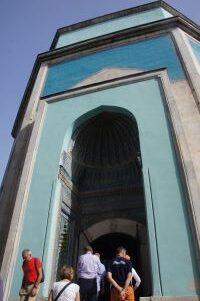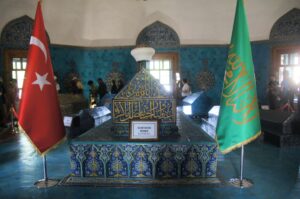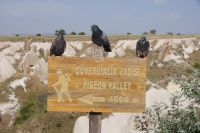Bursa tility.
Back in the day, Bursa was an important city, linking up with Chang’an and the Tang dynasty on the Silk Road. Back in the day, it was the gathering ground for the Ottomans to begin to tighten the noose; it was where Osman’s dream of being Sultan started taking shape, and he and son are buried in the city. Osman died shortly after he conquered the city of Bursa and moved his capital there. That was in the early 15th century. Those two reasons were why I wanted to visit Bursa.
Today, it’s better known as the fourth largest city in Turkey, and a major center of industry. Most of the automobile plants are located there. In addition, although only 60 miles from Istanbul (straight line!) the ferry across the Sea of Marmara adds time and leisure, though the road to Bursa (which continues down the coast and passes Ephesus/Pergamon, where I’ve taken it) is a first-class highway. It also has a 7500 foot mountain, called “Great,” and ski runs—near a market of over 15 million people. There was still snow on top.
 The only major sites we saw were an unusual Green Mosque and a Green Tomb, both belonging to Sultan Mehmed I, 1421 or so, which confirmed the shift from the more traditional Seljuk style to the more showy Ottoman.
The only major sites we saw were an unusual Green Mosque and a Green Tomb, both belonging to Sultan Mehmed I, 1421 or so, which confirmed the shift from the more traditional Seljuk style to the more showy Ottoman.
I got back from that trip around midnight— and had to catch the plane for Cappadocia at 5 am, which made me glad I had nothing else scheduled today when I got to Ushidar, one of the “cities” in the area. The gateway to Cappadocia is Kayseri, a town the Romans called Caesarea. Yes, the empire stretched from London through Asia minor, and through much of north Africa. One of the prominent early Christians in the biography of Constantine I’m reading was Bishop Eusebius, and tomorrow I guess I’ll get to see remains of the old churches. What’s interesting is the landscape, sort of like being in the Badlands—except that people carved homes and churches and hid from authority, especially, for about 700 years.
and had to catch the plane for Cappadocia at 5 am, which made me glad I had nothing else scheduled today when I got to Ushidar, one of the “cities” in the area. The gateway to Cappadocia is Kayseri, a town the Romans called Caesarea. Yes, the empire stretched from London through Asia minor, and through much of north Africa. One of the prominent early Christians in the biography of Constantine I’m reading was Bishop Eusebius, and tomorrow I guess I’ll get to see remains of the old churches. What’s interesting is the landscape, sort of like being in the Badlands—except that people carved homes and churches and hid from authority, especially, for about 700 years.
Today, though, I wandered around dazzled by the scenery. There are a lot of trails through the valleys and I walked about 2 hours on the Pigeon Valley  trail—so named because locals used to cultivate pigeons for their manure, which they then used for agriculture. The region is known for grapes, and my hike took me through vineyards.
trail—so named because locals used to cultivate pigeons for their manure, which they then used for agriculture. The region is known for grapes, and my hike took me through vineyards.
As I said, I have two days of tours of the scenery and the history over the weekend. I’m looking forward to it. After yesterday, I’m very Bursa-tile.